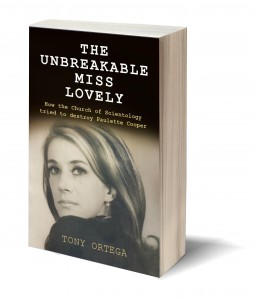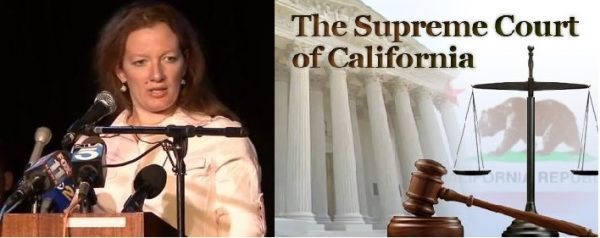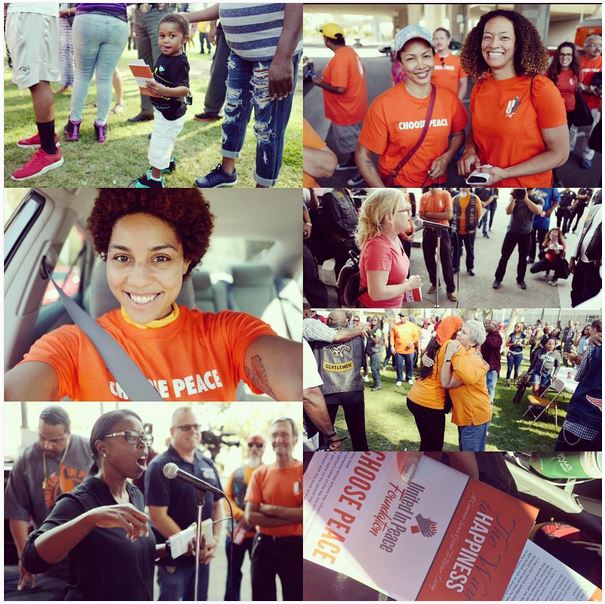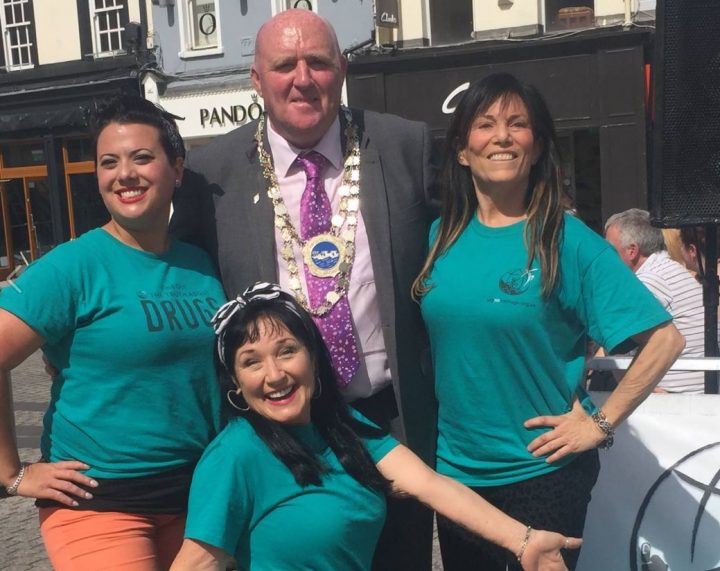When we came out of the courtroom in Los Angeles in April, we talked to Laura DeCrescenzo’s attorney, John Blumberg, about the motion for summary judgment that the Church of Scientology had filed in Laura’s forced-abortion lawsuit that has been dragging on for seven years now.
Scientology had lost that day as the motion was denied by Judge John P. Doyle, clearing the way for Laura finally to get a trial, perhaps in a year’s time. But Scientology rarely gives up without an appeal. When we asked Blumberg if he thought the church would petition the motion’s denial to the state appeals court, he told us that he not only expected that Scientology would appeal, but that the motion looked to him like something that had been written with the US Supreme Court in mind.
He may be right about that. After the state appellate court refused to overturn Judge Doyle’s decision, the Church of Scientology has now petitioned California’s State Supreme Court, asking it to take a fresh look at Judge Doyle’s decision. The US Supreme Court may be next — and it wouldn’t be the first time in this lawsuit.
If you’ve been following this case for the years we’ve been covering it, you might remember that this is the second motion for summary judgment that Scientology filed, and that both of them failed. We were in the courtroom for both of those decisions. Laura originally filed her lawsuit in 2009, alleging years of abuse after she had been recruited into Scientology’s “Sea Org” at only 12 years of age, and then had been forced to have an abortion at 17. There are complex issues in this case about whether Laura filed her lawsuit on time, and the church has also opposed it by arguing that it can treat its Sea Org workers pretty much any way it wants under the protections of the First Amendment.
In 2013, the original judge in the case at the Los Angeles Superior Court, Judge Ronald Sohigian, denied Scientology’s first motion for summary judgment by deciding that Laura did, in fact, have plenty of compelling evidence on her side that could not simply be dismissed by a judge and that did deserve to be heard by a jury. Then this year, Judge Doyle denied Scientology’s second motion for summary judgment, which had asked him to kill the lawsuit in favor of Scientology’s religious freedoms.
But what makes Judge Doyle’s decision especially interesting is that shortly after he announced it, he revealed that he had cousins in England who were not only Scientologists, but Sea Org members. He said that it had no influence on his decision, but then Scientology indicated that it intended to call one of Judge Doyle’s cousins as a witness if a trial happened, and so Judge Doyle had no choice but to disqualify himself.
Scientology then appealed Judge Doyle’s decision not only because the church argues that he got things wrong, but also because his ruling should be disqualified since the judge himself was disqualified.
The state appellate court didn’t agree. But now, Scientology has appealed even higher, to the state supreme court. We have that document for you. And we also asked attorney Scott Pilutik, who has been following this case from the start, to give us his thoughts on the church’s petition.
I see right away Scientology doing something they always do, which is to argue slanted facts to an appeals court (here, the State Supreme Court). This case hasn’t been tried but you’d be forgiven for assuming it had after skimming Scientology’s four pages of spin on Laura’s Sea Org tenure. Appeals courts can’t do much with disputed facts and I think most appeals court judges, when they see filler like that in briefs, roll their eyes and start from the assumption that your argument is weak because you’d otherwise be focusing on the legal question, which is all appeals court are there to answer. But they do this a lot, and my impression has always been that Miscavige must have a final say on legal briefs, likely to Scientology’s detriment. Same goes for the ministerial exception argument they threw in here — it’s filling space and looking busy but not terribly relevant.
And the filler is largely unnecessary because I think they don’t have the worst argument they’ve ever had to make, at least on its face. In short, they’re arguing that California Civil Procedure Code 170.3(a)(4) requires that rulings made by a judge who is later disqualified are also disqualified dating to the time the grounds for disqualification “are first learned of or arise.” Thus, because Judge Doyle knew he had a cousin who was a Scientologist at the time he rejected Scientology’s summary judgment motion, said ruling should be void.
Should the Supreme Court trouble itself to entertain review here, Judge Doyle’s explanation for his disclosure of his familial relationship would be scrutinized. Here’s the relevant passage:
“The family relationships here did not impact the Court’s determination of defendants’ summary judgment/adjudication motion. I can be fair and impartial in this matter. If, however, one of these family members might turn up as a witness in this case, that of course would present an untenable situation. I have not come across the names of any of these family members in their motion for summary judgment/adjudication papers, which comprise eight court volumes of this twenty-five volume court file, although perhaps I have overlooked something, or perhaps there is something pertinent about which I have not had an opportunity to be aware. I did not believe that these disclosures were required. However, following the conclusion of the April 27, 2016 hearing on defendants’ summary judgment/adjudication motion, the first substantive hearing in this matter over which I presided following two short scheduling conferences, in anticipation of the upcoming June 3, 2016 Status/Trial Setting Conference, and upon further reflection, these disclosures are being made in the interest of caution and to be sure that all relevant but not now apparent or known facts can be addressed.” [Emphasis added]
A few important things stick out here, and I think they’re fatal to Scientology’s petition (and probably helps explain the non-relevant fluff about Laura). First is that, per Doyle, the grounds for his recusal were not that his first cousin is a Scientologist, a fact presumed by Scientology’s petition, the grounds only arrived days later when Scientology asserted that they did in fact plan to have Doyle’s cousin’s daughter-in-law, Andrea Smith, testify. Indeed, Doyle stated in his disclosure that he didn’t see the fact that his cousin was a Scientologist as grounds for disqualification, but that it might if a family member were to scheduled to testify. Doyle mentions having not come across his family members in the course of his deciding the summary judgment motion. And who can blame him for such a mistake — Scientology has over six million members*, what were the odds one of his family members would testify in the case before him?
As usual, Scientology is omitting an important fact without telling you as much (their brief is unsurprisingly silent on Judge Doyle’s actual words). Implicit in their argument is that Judge Doyle should have disqualified himself as soon as the case came before him because he had a Scientologist cousin and Scientology was the defendant. But such grounds aren’t the basis for automatic disqualification for obvious reasons. A judge hearing a case against, say, the Archdiocese of Philadelphia, wouldn’t disqualify herself because she had a Catholic cousin–she might not even recuse herself if she were herself Catholic.
So why is Scientology different? They’re not, at least for this particular argument. The procedural disposition here is that Scientology lost a summary judgment motion, lost a writ, which are almost never granted, and lost it on summary denial, and are now asking the California Supreme Court to reverse two straight ass-kickings. Based solely on where this case has been and how it got here, it’d be a surprise if the Supreme Court denied it with more than two sentences. But you can also see how disingenuous Scientology’s argument is if you dig through the (relevant) facts.
*Scott is being funny here. We know, of course, that Scientology’s claims to having millions of members has always been a flat-out lie. Its former executives who had access to enrollment documents tell us that at its greatest extent, around the year 1990, the Church of Scientology had about 100,000 active members. Today, that number may be down to only 20,000, according to another high-level executive who recently left the organization.
And here’s the court document itself. We look forward to hearing your thoughts on it…
DeCrescenzo vs. Scientology: Petition for Review
——————–
Bonus items from our tipsters
Nancy Cartwright and Joy Villa made the scene as Scientology promoted a motorcycle ride in Compton this weekend for handing out ‘The Way to Happiness’ that Mike Rinder identified as yet another fundraising scheme.
Ireland’s mayor of Waterford, John Hearne, gets ‘safepointed’ by Scientology’s Foundation for a Drug-Free World and the Jive Aces.
——————–
 Posted by Tony Ortega on August 30, 2016 at 07:00
Posted by Tony Ortega on August 30, 2016 at 07:00
E-mail tips and story ideas to tonyo94 AT gmail DOT com or follow us on Twitter. We post behind-the-scenes updates at our Facebook author page. After every new story we send out an alert to our e-mail list and our FB page.
Our book, The Unbreakable Miss Lovely: How the Church of Scientology tried to destroy Paulette Cooper, is on sale at Amazon in paperback and Kindle editions. We’ve posted photographs of Paulette and scenes from her life at a separate location. Reader Sookie put together a complete index. More information about the book, and our 2015 book tour, can also be found at the book’s dedicated page.
Learn about Scientology with our numerous series with experts…
BLOGGING DIANETICS: We read Scientology’s founding text cover to cover with the help of L.A. attorney and former church member Vance Woodward
UP THE BRIDGE: Claire Headley and Bruce Hines train us as Scientologists
GETTING OUR ETHICS IN: Jefferson Hawkins explains Scientology’s system of justice
SCIENTOLOGY MYTHBUSTING: Historian Jon Atack discusses key Scientology concepts
Other links: Shelly Miscavige, ten years gone | The Lisa McPherson story told in real time | The Cathriona White stories | The Leah Remini ‘Knowledge Reports’ | Hear audio of a Scientology excommunication | Scientology’s little day care of horrors | Whatever happened to Steve Fishman? | Felony charges for Scientology’s drug rehab scam | Why Scientology digs bomb-proof vaults in the desert | PZ Myers reads L. Ron Hubbard’s “A History of Man” | Scientology’s Master Spies | Scientology’s Private Dancer | The mystery of the richest Scientologist and his wayward sons | Scientology’s shocking mistreatment of the mentally ill | Scientology boasts about assistance from Google | The Underground Bunker’s Official Theme Song | The Underground Bunker FAQ
Our Guide to Alex Gibney’s film ‘Going Clear,’ and our pages about its principal figures…
Jason Beghe | Tom DeVocht | Sara Goldberg | Paul Haggis | Mark “Marty” Rathbun | Mike Rinder | Spanky Taylor | Hana Whitfield











